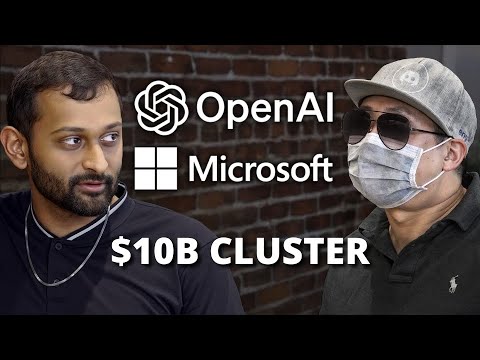In the video, Dylan Patel and Asianometry discuss OpenAI and Microsoft’s advancements in multi-datacenter distributed training, emphasizing the efficient use of computational resources through parallelization and significant investments in infrastructure. They predict that by 2026, AI training capabilities will dramatically increase, driven by large GPU clusters and substantial financial backing, while acknowledging the challenges of managing distributed resources.
In the video, Dylan Patel and Asianometry discuss the advancements in multi-datacenter distributed training, particularly focusing on OpenAI and Microsoft’s efforts. They highlight how the training regime is becoming increasingly parallelizable, with a significant portion of compute resources being utilized for generating synthetic data and conducting searches across various regions. This shift allows for more efficient use of computational power, as multiple data centers can work together to enhance training processes.
The conversation reveals that Microsoft has made substantial investments, exceeding $10 billion, in fiber connections to link their data centers. They mention that permits have been filed for construction, indicating that multiple regions are being connected, which will facilitate the training of large AI models. The scale of these operations is impressive, with estimates suggesting that the combined power of these data centers could exceed one gigawatt, equating to nearly a million GPUs.
Patel elaborates on the power consumption of GPUs, noting that next-generation Nvidia GPUs consume significantly more power than their predecessors. He discusses the establishment of large clusters, such as OpenAI’s 100,000 GPU cluster in Arizona and similar setups by Microsoft and its partners. The video emphasizes the rapid growth in the number of data centers and the scale of GPU clusters being built, indicating a trend towards larger and more powerful AI training infrastructures.
The discussion also touches on the competitive landscape, with Elon Musk’s cluster being mentioned as a potential contender for the largest GPU cluster. The speakers speculate on the efficiency of multi-site training and the potential losses that could occur when connecting different sites. They express optimism about the feasibility of multi-datacenter training, while acknowledging the challenges that come with it, such as efficiency losses and the complexities of managing distributed resources.
Finally, Patel predicts that by 2026, there will be significant advancements in AI training infrastructure, with multiple gigawatt sites planned. He suggests that the scaling of computational power will continue to outpace expectations, driven by substantial financial investments. The video concludes with a discussion on the potential for OpenAI to raise significant funds to support these ambitious plans, highlighting the leadership and fundraising capabilities of Sam Altman, OpenAI’s CEO.
